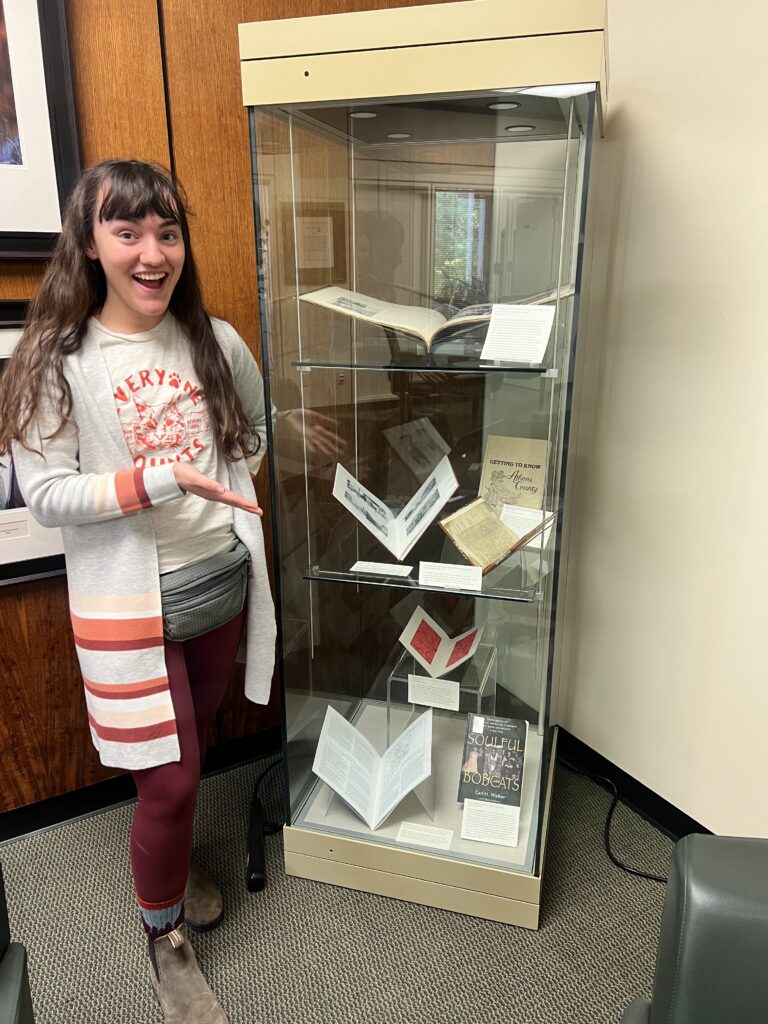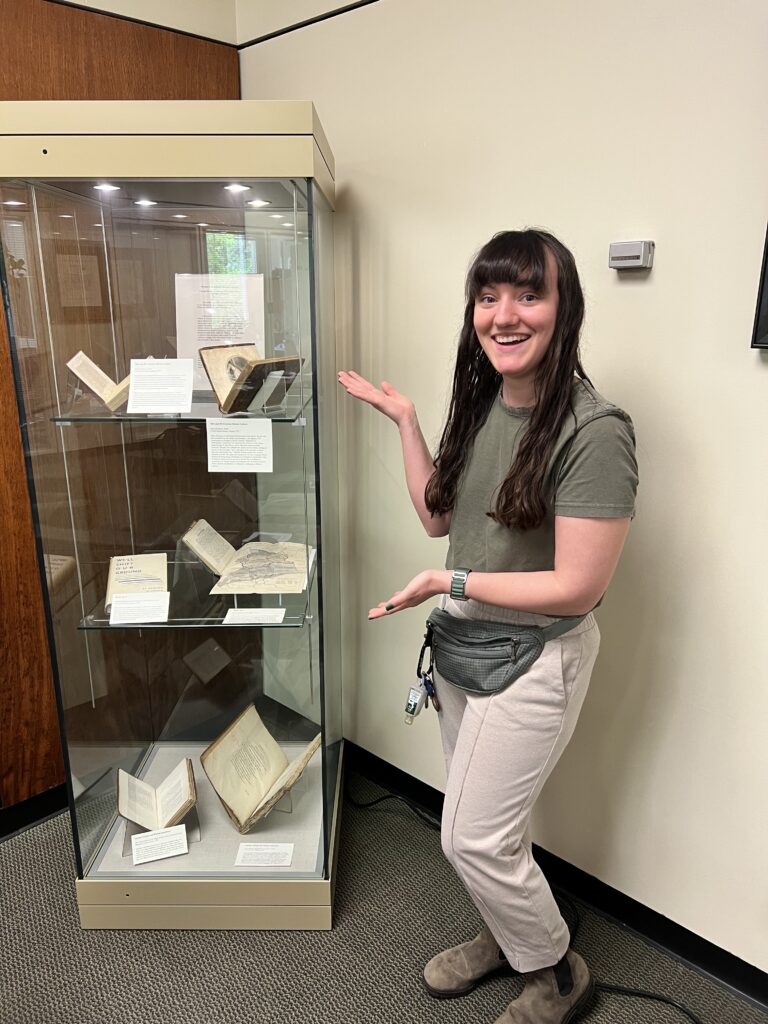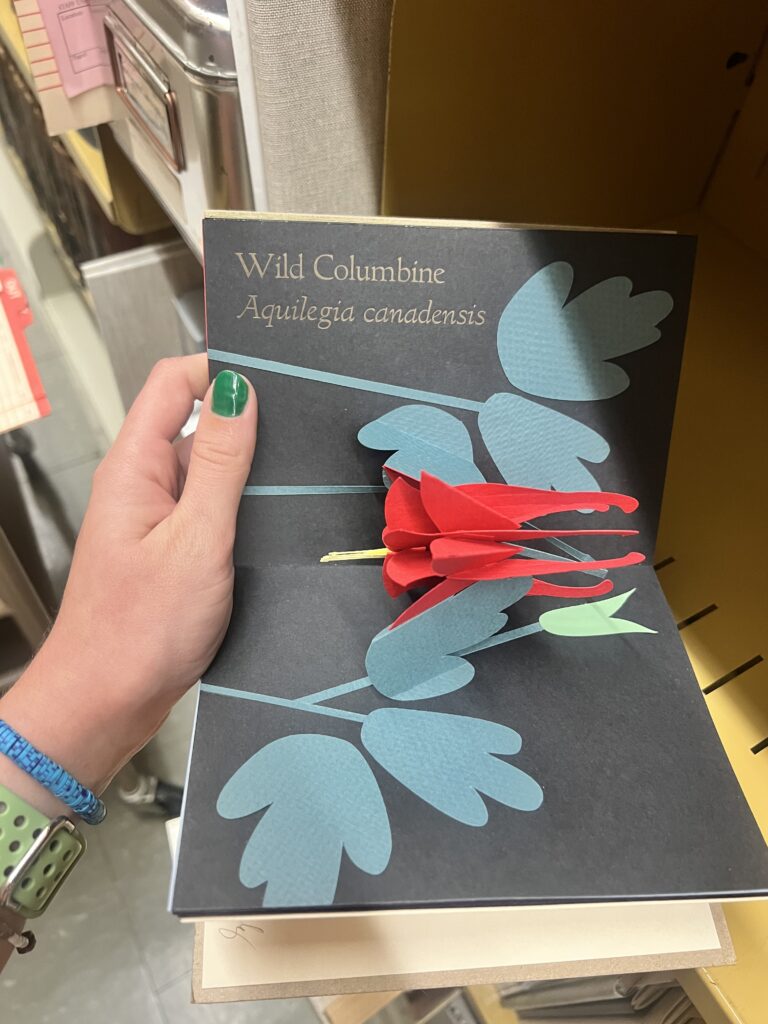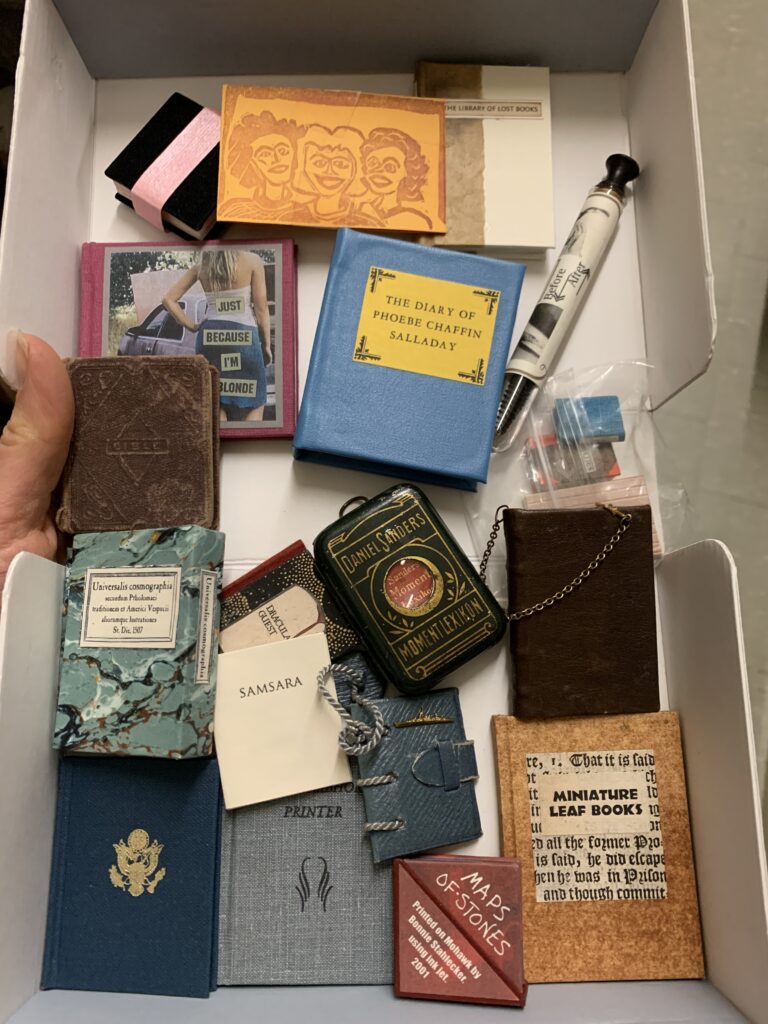By Alexis Voisard, MA Student in English, 2022-23 Rare Book Graduate Assistant

Athens has been spoiled by beautiful weather, and I’ve taken advantage by going around campus getting photos in some of my favorite spots wearing my graduation robe! It’s starting to feel bittersweet going to classes and working at the library knowing I only have a few weeks left. In this post, I reflect on three things I’m going to miss most from working as the 2022-2023 Rare Book Graduate Assistant.
1. Curating exhibits
I’ve used the display case in the Dean’s Suite of Alden’s 5th Floor this year for curating two exhibits. Hours of research go into these exhibits, and I’ve thoroughly enjoyed every part of the process. Sometimes choosing the books to go into the case is one of the hardest decisions—especially with my spring 2023 exhibit featuring women in the Edmund Blunden Collection. There were many women authors and even more books that Blunden collected by each of these women authors to choose from.
Consistently I’ve focused on curating exhibits that highlight underrepresented authors in special collections, especially Black and women authors. In designing my fall 2022 exhibit, it was neat to see the historical and economic impacts that Black community members made on Athens. I had walked by the historical marker on Court Street that remembers the Berry Hotel, and it was great to read more about Mattie and Edward Berry from items in our Ohioana Collection to learn about the legacy they left on Athens.
I felt like I built a special relationship with the Ohioana Collection and the Blunden Collection with how much time I invested in designing my exhibits to tell a story about these collections and organize books that stand out with a theme in mind. Overall, creating these exhibits helped me build a stronger connection with the collections that I work with every day, and being able to share my explorations and discoveries in the form of an exhibit was truly one of my favorite experiences working as a GA in Rare Books!
2. Discovering cool finds
I had the pleasure of pulling many different books for readers with all kinds of research interests. As I roamed the shelves, I would take creative liberty to check out interesting finds close to the books that readers requested, and I was always surprised by what I found. Friends and family were always curious about my job, and I’m always looking to increase visibility of what rare book librarians do. So, whenever I stumbled upon a fun discovery, I would snap a picture and share it with friends and family, calling it a “Cool Find of the Day.”

Roaming the Travel Collection led to many fun finds of places I had traveled to. I shared one “Cool Find of the Day” with my parents, a picture from The Great Southwest (1914) of Garden of the Gods where we traveled last summer. They were absolutely delighted, and it sparked conversations about the memories we made there.
I also remember surprising my friends with finds that they didn’t expect, like artists’ books, which especially challenge what we traditionally identify as a book, like miniature books or this artist book by Shawn Sheehy with beautiful, color pop ups of different flower species. Historical finds always sparked interesting conversations, especially with my friends in WGSS courses with items like an 1878 copy of What Girls Ought to Know. We had great conversations about how we would “talk back” to this author and what kind of content we would include in a modern version based on our intersectional knowledge of gendered experiences.
I’m going to miss sharing these cool finds with my friends and family, especially the dialogue that followed. Getting to share what I encountered everyday made an otherwise standard librarian practice more special, making me feel more connected to my friends and family and connecting with many diverse research interests to support students and faculty using our rare books.
3. Working with rare books
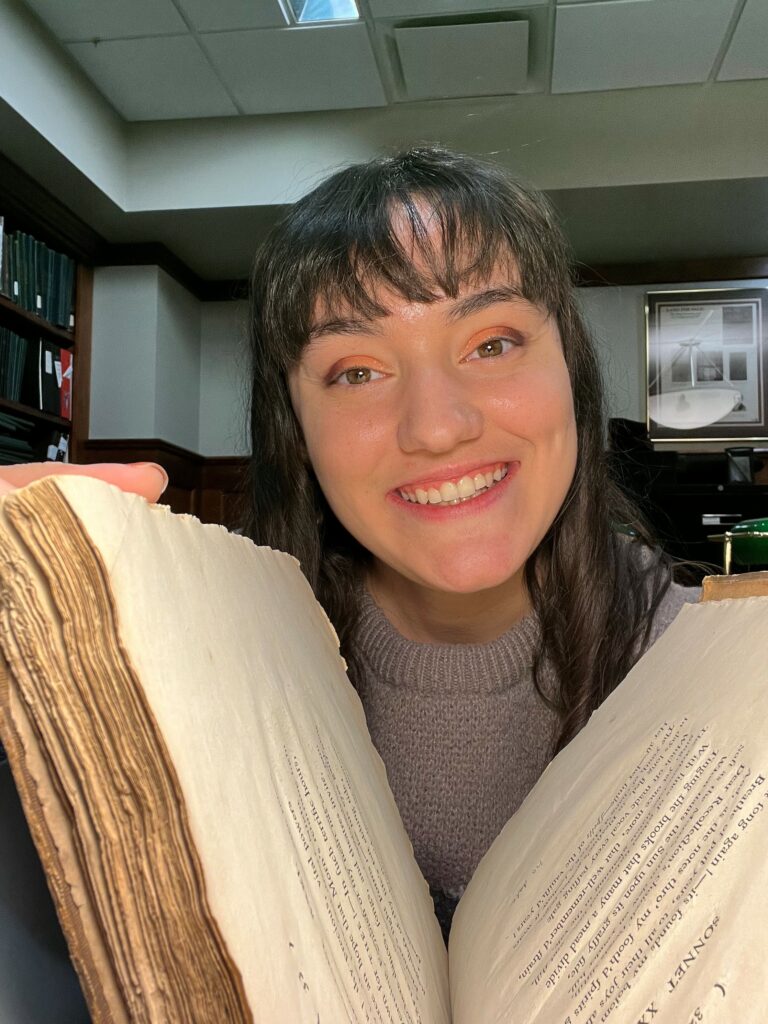
I’m also going to miss working with so many diverse books on a daily basis. I remember my first day exploring the rare book collection and feeling amazed by the old and modern books around me, and also feeling slightly overwhelmed as to how to take care of them. Besides opening a few rare books passed down in my own family, I had never really worked with rare books before starting my GA experience, so I’m so grateful for Miriam Intrator’s knowledge and patience to teach me all about handling these amazing materials.
Coming from an English background, I was eager to learn all the new terminology used by the rare books discourse community, with particular words that I’ve come to appreciate and look for in working with rare books. One word is frontispiece, which is an illustration or photograph found at the front of the book facing a book’s title page. I encountered many frontispieces of women authors I discovered in the Edmund Blunden collection; Mary Augusta Ward’s frontispiece is one of my favorites:
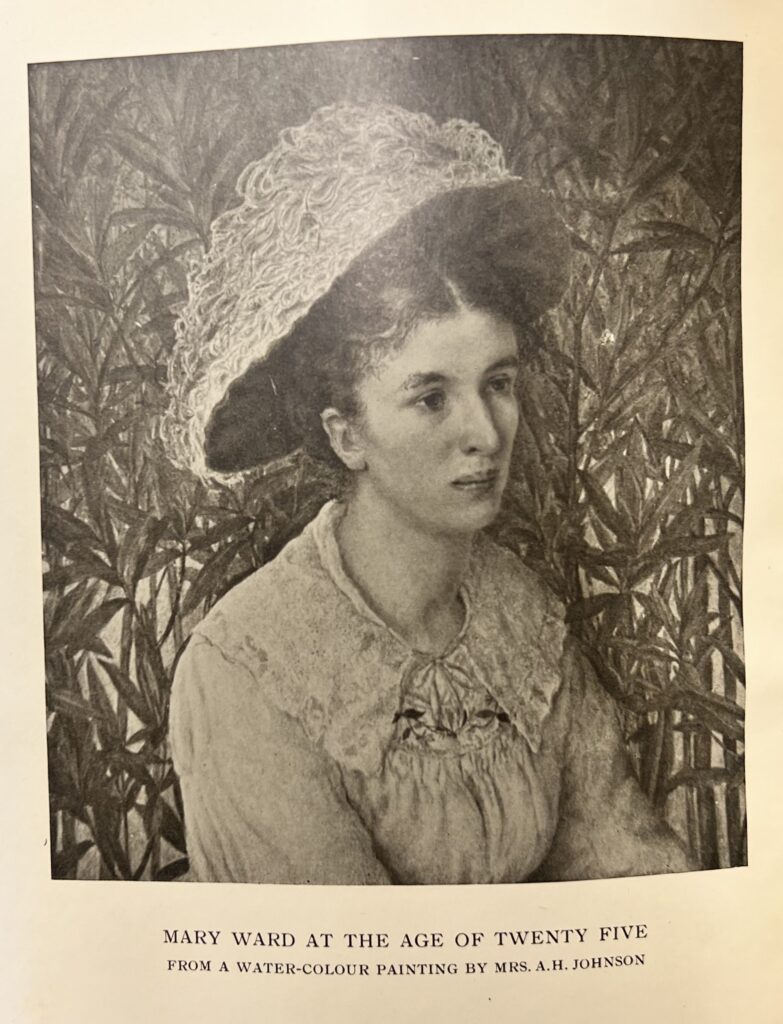
The Life of Mrs. Humphry Ward, by her daughter, Janet Penrose Trevelyan, 1923
From exploring the same Blunden collection, I also found many examples of marginalia, recognizable as notes or drawings added to a book by an author or reader. Blunden loved to leave notes in his books, with questions and reactions to poetry or commenting on World War I events that he experienced in real life. Also related to drawings, I had fun drawing manicula on a white board, an interactive element of Miriam Intrator’s Meetings in the Margins exhibit. Check out what manicula other visitors drew (below and online)!
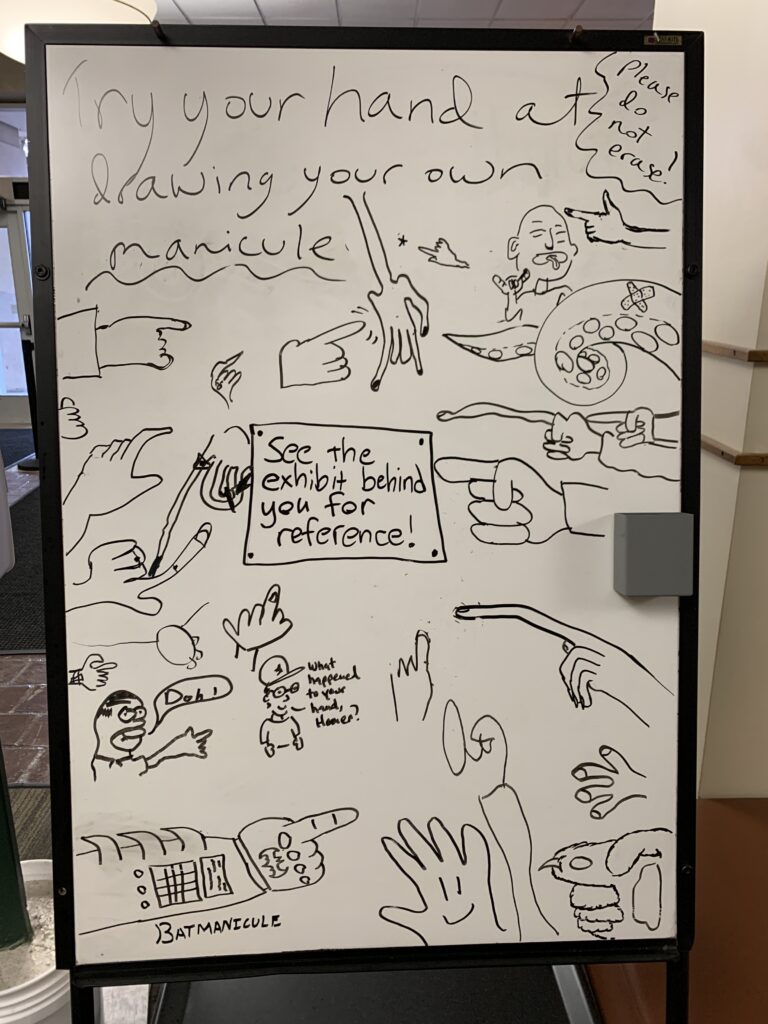
Working with rare books has been one of my favorite experiences in my graduate program. I’ve learned so much about what Alden’s Special Collections has to offer and how valuable it is for the Ohio University community. After graduation, I’m eager to continue working in higher education, where I can see myself thriving in the classroom and the library. Sharing a big thank you to Miriam Intrator and everyone else in the Special Collections department who has made this experience special!
